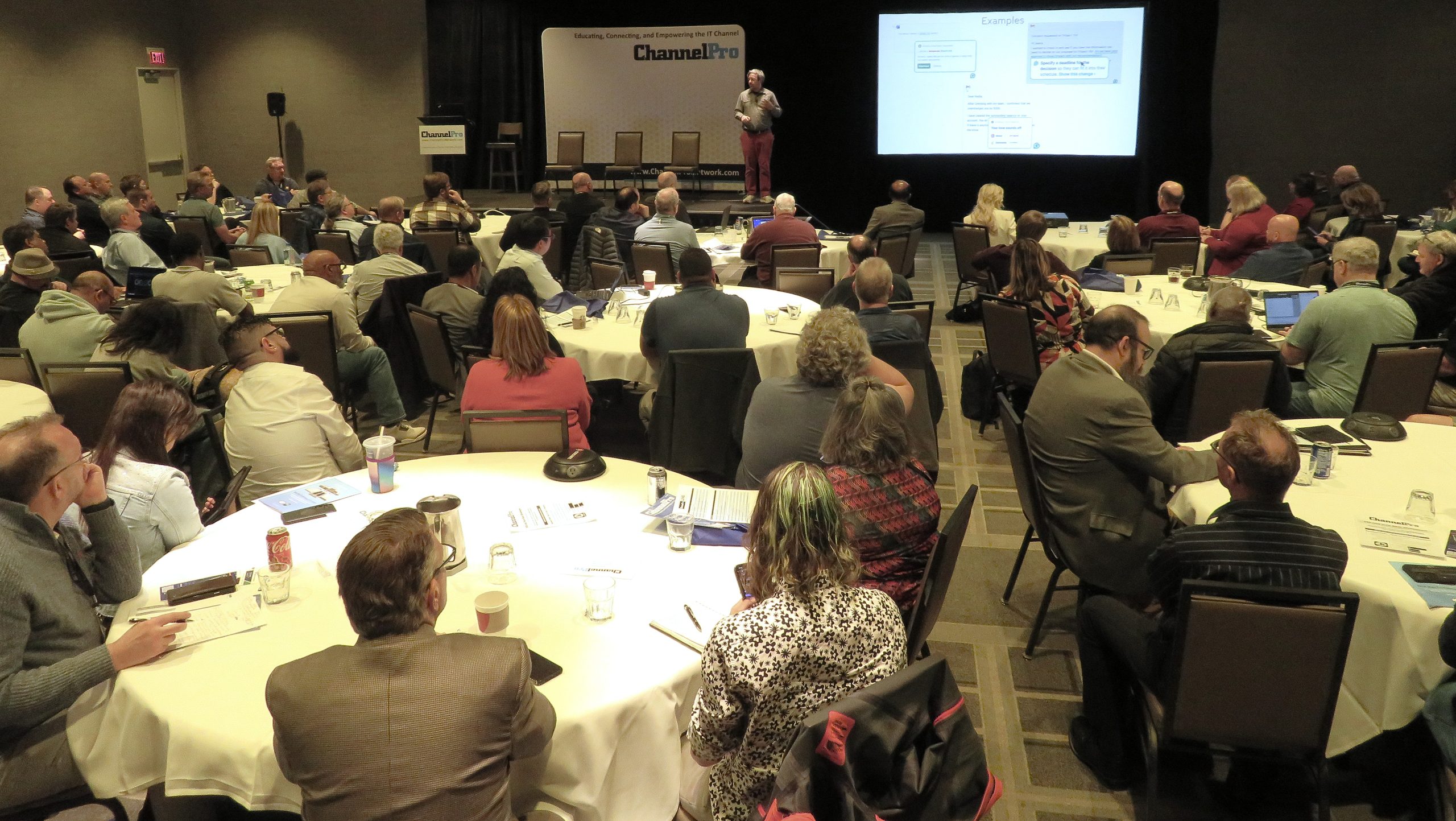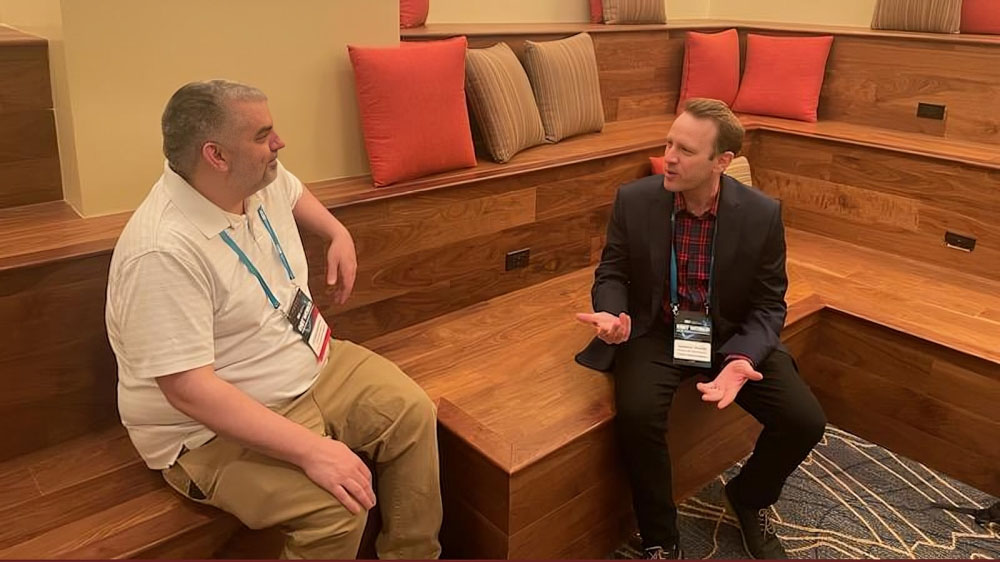IBM Z® is on a roll. Over the last year, we’ve seen increased growth and excitement around the platform driven by new interest in IBM’s confidential computing capabilities and new workloads such as digital asset custody. 85 customers are actively engaged in planning or have a POC in progress with Red Hat OpenShift on IBM Z and LinuxONE. In fact, according to a recent report conducted by Forrester Consulting on behalf of Deloitte[1], 74% of respondents believe the mainframe has long-term viability as a strategic platform for organizations.
For many of our customers, the COVID-19 pandemic has also been a driver of accelerated workload growth on our platforms. Customers are facing new business challenges associated with changing consumer behaviors such as increased volatility in financial trading and increased online retail transactions, and they are turning to IBM Z to help manage that increased spike in business in a predictable, resilient and secured way. In fact, IBM Z customers temporarily activated a total of over 4x more additional general purpose processor capacity via On/Off Capacity on Demand in 1Q 2021 compared to 1Q 2019 – enough additional temporary capacity to process up to 9.9 trillion more transactions[2].
But that doesn’t mean the IBM Z family is just for today’s biggest enterprises. As I’ve mentioned many times before—I’ve spent a lot of time speaking with startups like KodyPay and Ilara Health, and business partners like Cognition Foundry, who are turning to LinuxONE for its security prowess and using it as a competitive differentiator in the marketplace for hybrid cloud.
With that in mind, today we’re announcing new entry-level LinuxONE hardware, IBM LinuxONE III Express, and a new flexible pricing model for IBM Z hardware, Tailored Fit Pricing for IBM Z—Hardware Consumption Solution, which follows our announcement to co-locate IBM DS8910F Storage into the IBM Z15 Model T02 frame last week.
Announcing IBM LinuxONE III Express
IBM LinuxONE III Express is designed to be an off-the-shelf option for startups, business partners and ISVs built with increased velocity in mind to get customers up and running quickly.
Starting at $135,000 USD*[3], the single-configuration LinuxONE III Express is designed as a new cost-effective offering for the most popular workloads, including data serving and Red Hat® OpenShift®. IBM internal tests show that a 12-core IBM LinuxONE III Express server running WebSphere and Db2 workloads requires 18.7 times fewer cores when compared to x86 servers and delivers a 57% lower TCO over three years.[4]
Generally available on May 25, LinuxONE III Express will feature:
- Three-sizes of configuration to fit most workloads, as an alternative to public cloud
- Improved time-to-value: a single configuration with predictable pricing ensures more rapid delivery and install of the server
- Confidential computing capabilities: Ability for our customers to leverage IBM Cloud Hyper Protect Services for the highest commercial levels of privacy
While this announcement gives us the opportunity to expand the aperture of LinuxONE customers to even more startups and ISVs, we are also announcing a new pricing model to help our IBM Z customers maximize cost and productivity efficiency on the platform.
Expanding flexibility around hardware pricing
Since announcing Tailored Fit Pricing for IBM Z in May 2019, more than 100 customers[5] such as Dillard’s have taken advantage of our cloud-like pricing model for IBM Z software designed to deliver the flexible and transparent consumption-based pricing for workloads on IBM z/OS.
Today, we’re taking this a step further by announcing a new complementary cloud-like pricing model for hardware, the Tailored Fit Pricing for IBM Z—Hardware Consumption Solution. When coupled with Tailored Fit Pricing for IBM Z software, we’re delivering a full-stack approach to enable our customers to quickly respond to changes in dynamic workloads and needs of the business.
According to a recent ParkMyCloud study,[6] wasted cloud spend is projected to hit $21 billion by 2021, often driven up by increasingly common “spikier” workloads and unexpected increases in capacity requirements.
Today’s announcement helps curb wasted cloud spend and unpredictability by bringing a usage-based consumption model to hardware—giving our customers increased predictability of pricing across hardware with an always-on reserve of spare capacity that has a usage-based charging model to meet temporary peak business needs. With the Tailored Fit Pricing for Hardware Consumption Solution, our customers can now scale up to meet business demands while addressing potentially runaway cloud costs.
“Our business needs are constantly changing in response to customer demand, market changes and new regulations. IBM Z plays a key role in our operations, and with sudden workload spikes due to online banking and instant-payments, it allows us to scale quickly and deliver high quality customer service. Tailored Fit Pricing for IBM Z Hardware Consumption offers a flexible and transparent pricing solution that delivers optimal business performance in a cloud-like way, so we only pay for what we use,” said a large European bank.
>> For more information please visit us here.
Statements regarding IBM’s future direction and intent are subject to change or withdrawal without notice and represent goals and objectives only.
[1] Source: A commissioned study conducted by Forrester Consulting on behalf of Deloitte Consulting LLP, June 2020 [2] On/Off Capacity on Demand activation information is based on IBM internal records of all temporary activations above the customer’s owned capacity level from January through March of 2019 and from January through March of 2021. The potential transaction estimate is based on IBM internal measurements of a CICS workload in a dedicated z15 environment and the increase in total activated general purpose CP capacity from all temporary activations above the customer’s owned capacity level. [3] This price reflects the base hardware configuration, and does not include additional items, maintenance, the operating system or other software. All prices are in USD. Prices shown do not include tax. Price will vary based on country and currency. [4] This is an IBM internal study designed to replicate usage of a typical IBM customer workload in the marketplace. Results may vary. The workloads consisted of a transactional core banking application running on WAS and Db2. Eight instances of the core banking application were run with four instances representing a Dev/Test/QA environment and four instances representing a Production environment. Dev/Test/QA and Production environments were differentiated by their CPU utilization levels ranging from 3% – 20% utilization based on IT Economics client assessment x86 workload data. Average aggregate throughput was within 5% across all instances on both platforms in the internal study. On LinuxONE the banking application ran on RHEL 7.6 in two LPARs with z/VM 7.1, with 4GB and16 GB memory, and 4 virtual CPs. Total number of LinuxONE cores needed to deliver the workloads was 20. To achieve the same workload throughput on x86, the banking application ran on a total of 24 2-processor Sandy Bridge, Haswell, and Broadwell x86 systems, with speeds ranging from 2.4-3.2 GHz with a total of 448 cores. Actual tests were run on a z14 M04/LinuxONE Emperor II, which is rated within 3% of LinuxONE III LT2 Express performance, when configured with 12 cores. Both the x86 and LinuxONE environments had access to the same storage array. Total cost of ownership is defined to include hardware, software, labor, networking, floor space and energy costs over a period of three years. IBM software pricing is based on standard U.S. list prices with a 40% discount. LinuxONE Express, RHEL and z/VM pricing is based on U.S. prices as of May 2021 and x86 hardware pricing is based on IBM analysis of U.S. prices as of April 2021 from IDC. Floor space, networking, energy, labor and other x86 software costs are based on data from IBM IT Economics assessments for customers. For additional information on the TCO model, contact the IBM IT Economics Team at IT.Economics@us.ibm.com. [5] Based on an internal IBM assessment [6] ParkMyCloud 2020 Cloud Waste Checklist (https://www.parkmycloud.com/collateral/the-cloud-waste-checklist/)














